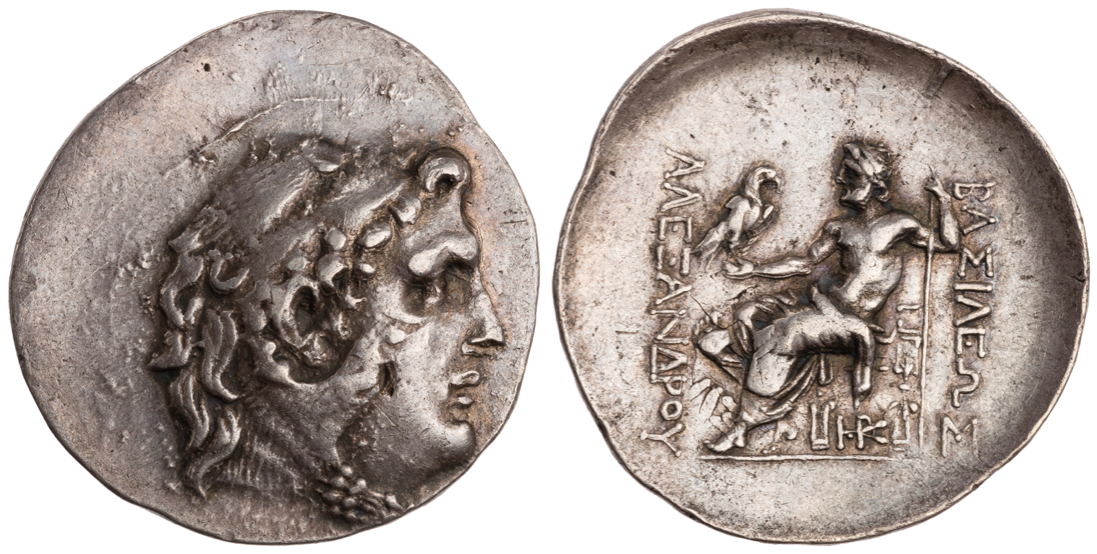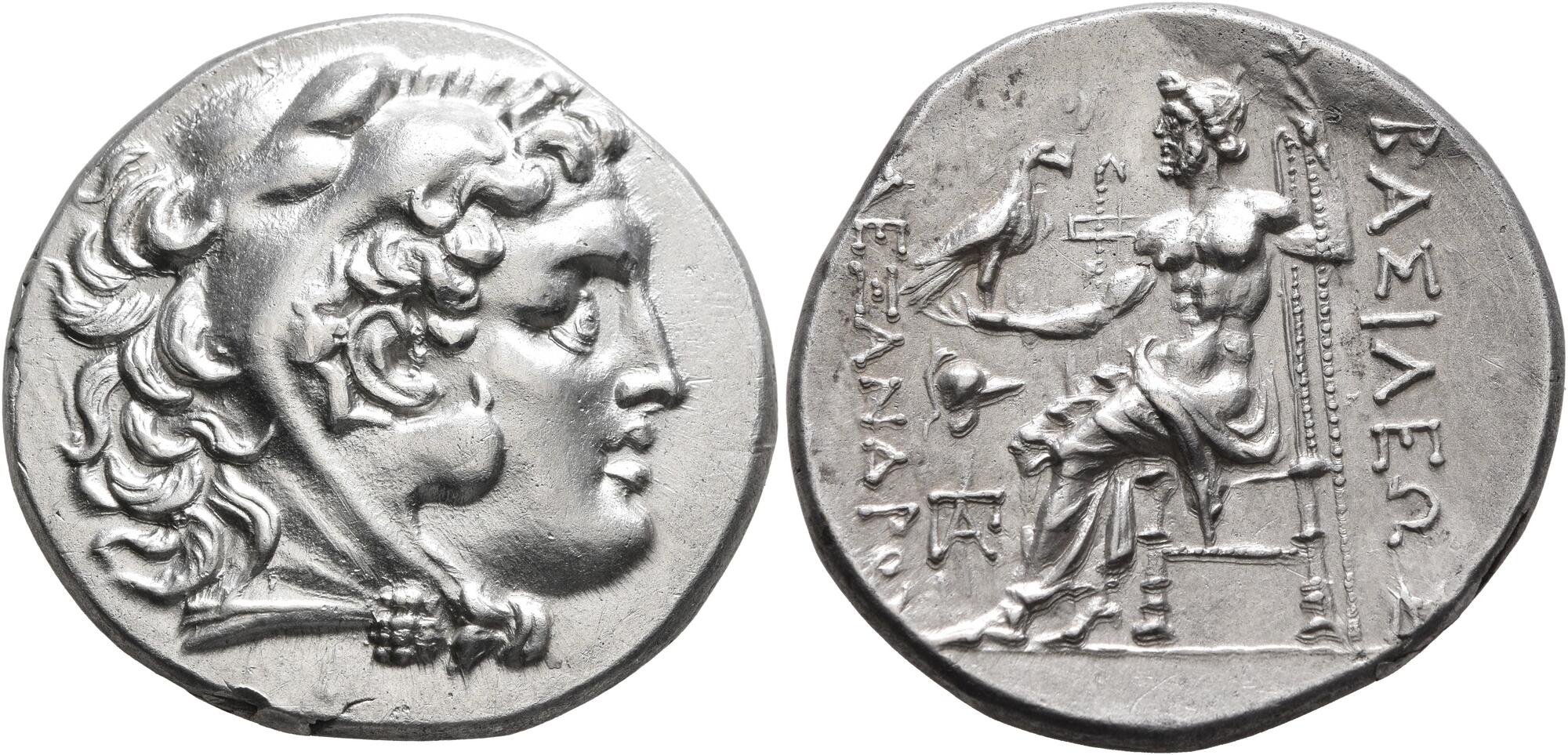150 BCE - 100 BCE | BAΣΙΛΕΩΣ AΛΕΞANΔΡΟΥ
Overstriking coin
DB_Overstrikes_787.png [Museum website]
Overstruck variety
Alexander the great tetradrachm basilews.jpg
[1]
Description
| ObverseInscription or printing placed on the obverse.:
|
Head of Herakles right, wearing lion skin headdress.
|
ReverseInscription or printing placed on the reverse.:
|
BAΣΙΛΕΩΣ AΛΕΞANΔΡΟΥ (Greek) Zeus enthroned left, holding eagle and scepter. Under the throne, monogram HPK. In left field, Corinthian crested helmet.
|
Mint and issuing power
| MintIdentifies the place of manufacture or issue of a numismatic object.:
|
Mesembria
|
Ancient regionAncient region.
|
Thrace
|
Modern countryModern country: Bulgaria
|
AuthorityIdentifies the issuing power. The authority can be "pretended" when the name or the portrait of X is on the coin but he/she was not the issuing power. It can also be "uncertain" when there is no mention of X on the coin but he/she was the issuing power according to the historical sources:
|
Alexander III the Great (Argead king, 336-323 BC)
|
Chronology
| FromIdentifies the initial date in a range assigned in a numismatic context. 150 BCE toIdentifies the final date in a range assigned in a numismatic context.. 100 BCE
|
Hellenistic 323-30 BC  periodTime period of the numismatic object. periodTime period of the numismatic object.
|
Physical description
MetalThe physical material (usually metal) from which an object is made.: Silver 
|
WeightWeight of the numismatic object (in grams). in grams: 16.5416.54 g <br />16,540 mg <br />
|
DenominationTerm indicating the value of a numismatic object. Examples: tetradrachm, chalkous, denarius.: tetradrachm 
|
AxisDescribes the directional relationship between the obverse and reverse of a numismatic object.: 11 mm <br />0.1 cm <br />
|
| DiameterDescribes diameter of an object (in mm).: 3535 mm <br />3.5 cm <br />
|
StandardStandard.: Attic
|
References
| Coin referenceReference of the Coin:
|
Waggoner 1979, p. 11, n° 33, Museum website
|
Coin series referenceReference to coin series study:
|
Price 19911Price 1991, n° 1009, Karayotov 19922Karayotov 1992, n° 102, Karayotov 19943Karayotov 1994, p. 89, n° 178 (O23-R83 monogram 26), Callataÿ 1997a4Callataÿ 1997a, p. 92, D1/R1a (Groupe 1), MacDonald 20095MacDonald 2009, p. 212, n° 6
|
| Coin series web referenceCoin series web references:
|
|
Description
| ObverseInscription or printing placed on the obverse.:
|
|
ReverseInscription or printing placed on the reverse.:
|
visible: letters in the inner left field
|
Mint and issuing power
Chronology
| FromIdentifies the initial date in a range assigned in a numismatic context. toIdentifies the final date in a range assigned in a numismatic context..
|
periodTime period of the numismatic object.
|
Physical description
References
Date: c. 250-175 BC (PELLA) ; c. 225-175 BC (Period II, Karayotov)
References
- ^ Price, Martin Jessop (1991), The Coinage in the Name of Alexander the Great and Philip Arrhidaeus: a British Museum Catalogue, 2 vol., Zürich-London, 637 p., 637 p., clix pl.
- ^ Karayotov, Ivan (1992), Mонетосеченето на Mесамбрия, Спектър - АЛ, Burgas, 130 p.
- ^ Karayotov, Ivan (1994), The coinage of Mesambria. vol. 1: silver and gold coins of Mesambria, Centre of Underwater Archaeology, Sozopol, 134 p. and 44 pl.
- ^ Callataÿ, François de (1997), L'histoire des guerres mithridatiques vue par les monnaies, Numismatica Lovaniensia 18, Louvain-la-Neuve, XIII + 481 p. et 54 pl.
- ^ Macdonald, David (2009), Overstruck Greek coins: studies in Greek chronology and monetary theory, Whitman Publishing, Atlanta.


